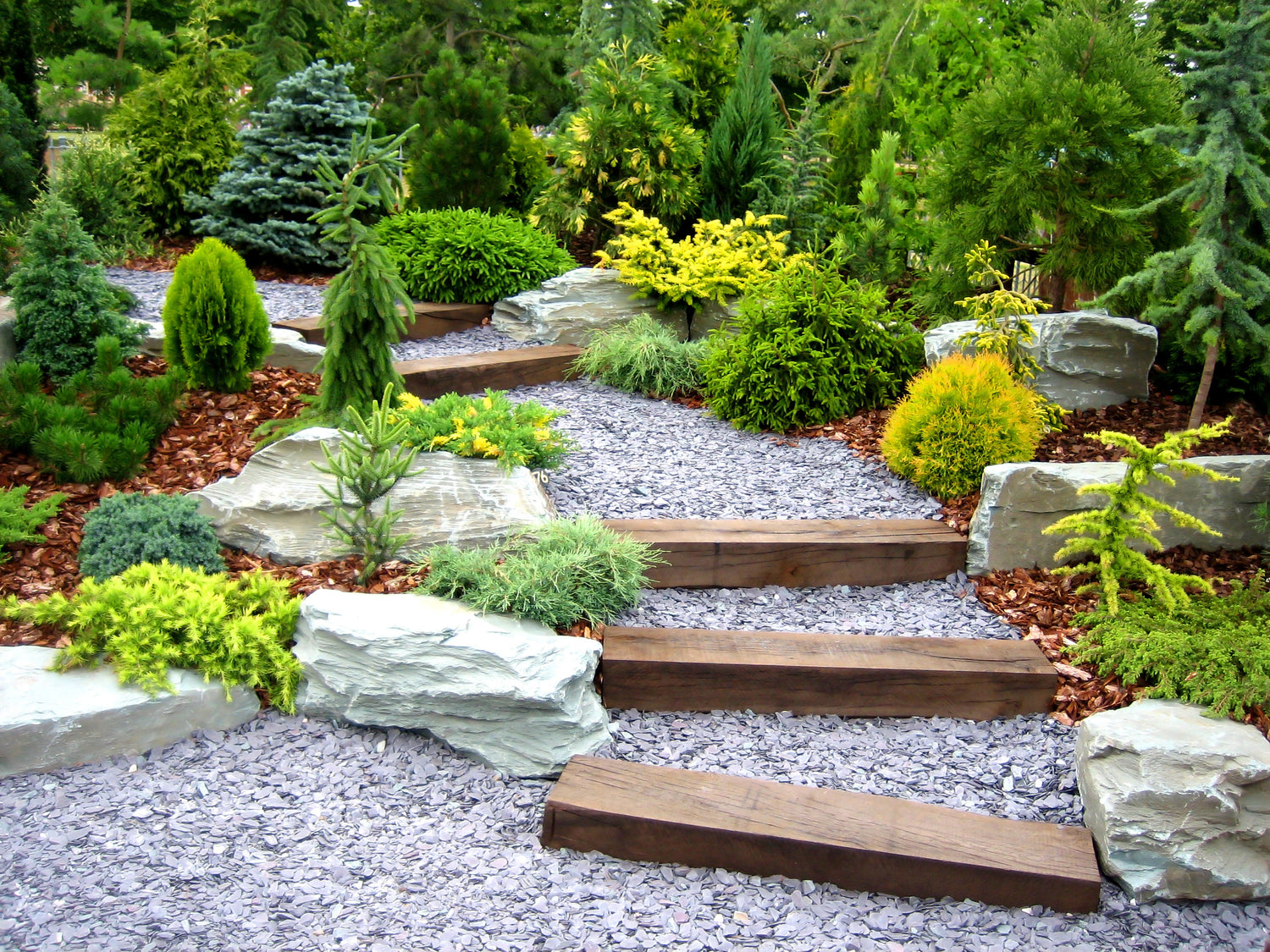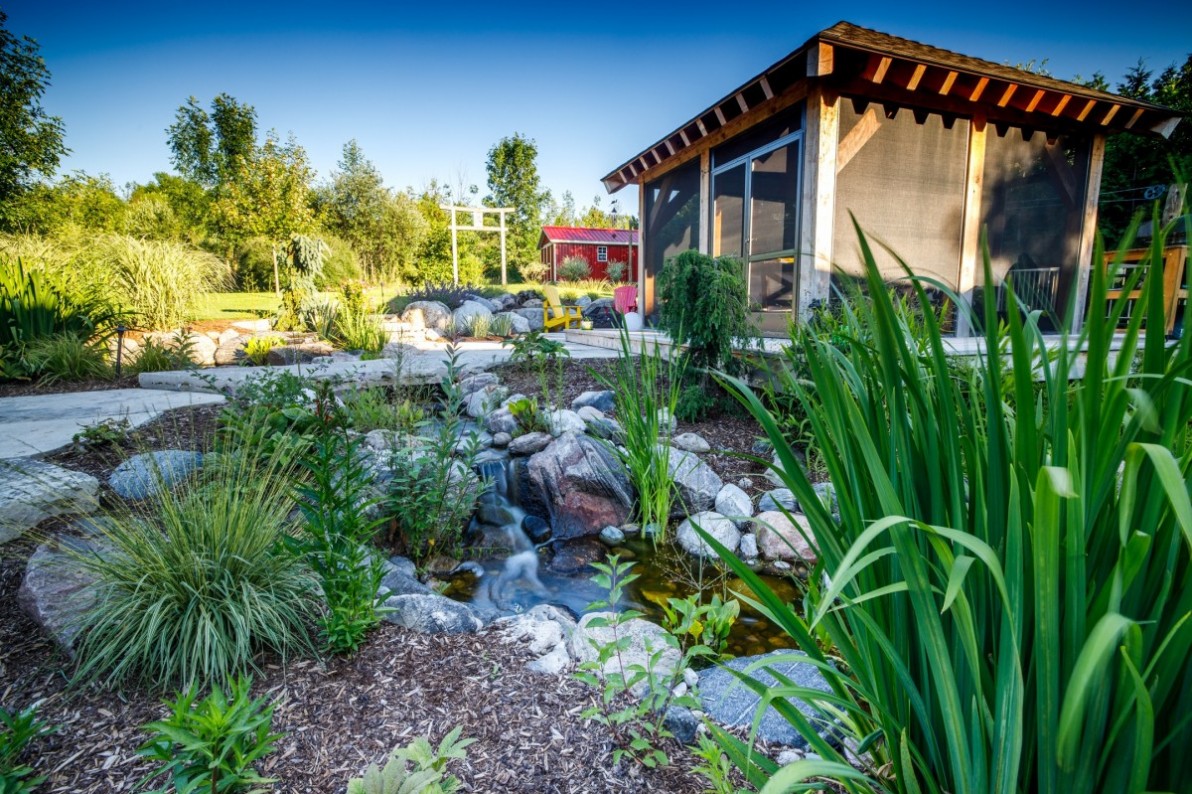Landscaping St. Louis MO Reveals Top Seasonal Cleanup Tips for a Year-Round Beautiful Yard
Landscaping St. Louis MO Reveals Top Seasonal Cleanup Tips for a Year-Round Beautiful Yard
Blog Article
Comprehend the Value of Lasting Practices in Modern Landscape Design Solutions
Sustainable techniques in modern landscape design are increasingly acknowledged for their crucial role in ecological conservation. By carrying out environment-friendly methods, landscaping professionals can boost biodiversity and minimize their eco-friendly footprint. This strategy not only boosts home looks yet likewise promotes neighborhood health. As the need for greener options expands, the concern develops: exactly how can these sustainable methods reshape the future of landscaping and our relationship with nature?
The Duty of Lasting Landscaping in Environmental Preservation
While numerous might ignore the relevance of landscape design in ecological conservation, lasting landscaping techniques play an essential duty in promoting eco-friendly equilibrium. By prioritizing native plants and lessening water use, these methods assist protect neighborhood biodiversity and minimize the pressure on water resources. In addition, lasting landscape design can enhance soil health and wellness through natural techniques, which cultivates a much more resistant ecosystem.Moreover, including permaculture principles enhances land efficiency while decreasing environmental effect. This approach encourages making use of natural pest control and reduces dependence on chemical fertilizers, consequently protecting bordering ecological communities. Landscaping that concentrates on sustainability likewise adds to carbon sequestration, assisting to mitigate environment modification effects.Furthermore, eco-friendly landscaping develops environments for wildlife, promoting a diverse array of species. By participating in sustainable techniques, landscapers not only beautify areas yet likewise proactively join the larger initiative to shield the environment for future generations.
Benefits of Eco-Friendly Practices for Landscape Design Professionals
Eco-friendly techniques in landscape design deal numerous benefits for specialists in the area - Landscaping St. Louis MO. These approaches not just add to a lowered environmental impact but also improve residential property worth and cause lasting price savings. By embracing lasting strategies, landscape design professionals can create a much more practical future for both their businesses and the world
Reduced Ecological Impact
As landscape design specialists progressively embrace green practices, they add considerably to decreasing the ecological influence of their services. Executing sustainable methods such as natural fertilizers, indigenous plant selection, and efficient watering systems reduces making use of hazardous chemicals and preserves water sources. These techniques not only boost dirt wellness however likewise sustain local biodiversity by producing habitats for wildlife. By focusing on making use of renewable energies and decreasing waste, landscape design specialists can substantially reduce their carbon impact. Furthermore, integrating environment-friendly modern technologies, such as solar-powered equipment, even more reduces reliance on fossil fuels. On the whole, these green approaches promote a much healthier ecosystem, showing the critical function that lasting landscape design plays in ecological stewardship.
Improved Residential Property Worth
Buying sustainable landscape design techniques can greatly boost residential property value, with research studies indicating that homes with well-designed green spaces can see a rise of approximately 15% in market value. Green landscapes not only bring in potential purchasers however additionally create a long lasting perception that highlights a commitment to environmental stewardship. Features such as native plants, water-efficient irrigation systems, and permeable paving add to aesthetic appeal while lowering upkeep expenses. Additionally, residential properties with lasting landscape design frequently have reduced water usage and energy expenses, including to their good looks. As recognition of environment modification and sustainability surges, customers increasingly focus on homes that show eco-conscious worths, making lasting landscaping a critical financial investment for building owners looking for to maximize their return.
Long-Term Cost Financial Savings
Lasting landscaping techniques offer significant lasting expense financial savings for professionals in the market. By utilizing native plants and drought-resistant landscape design, professionals can minimize water use and lower irrigation prices. Furthermore, using natural fertilizers and insect control methods minimizes chemical acquisitions and promotes healthier soil, bring about minimized upkeep expenses in time. Implementing reliable power resources, such as solar-powered lighting, in addition decreases operational costs. Moreover, sustainable techniques usually cause fewer repairs and replacements because of making use of long lasting products and styles that endure environmental challenges. By buying eco-friendly methods, landscaping specialists can not just boost their solution offerings but also delight in recurring cost savings that contribute to their total earnings and sustainability in an affordable market.

Water Conservation Methods in Landscape Design
Reliable water preservation techniques are important in landscape design, specifically in areas facing water deficiency. One popular approach is the implementation of xeriscaping, which makes use of drought-resistant plants and decreases the demand for supplemental irrigation. In addition, utilizing drip watering systems can significantly reduce water waste by delivering moisture directly to the plant roots. Rain harvesting is an additional effective approach, permitting home owners to collect and keep rainwater for landscape use. Dirt wetness sensing units can additionally boost water efficiency by keeping an eye on dirt problems and educating irrigation timetables. Mulching is additionally advantageous, as it aids preserve soil moisture while reducing weeds. Landscape developers are urged to create contour yards that advertise all-natural water drain and minimize overflow. By adopting these water conservation techniques, landscape design services can add to sustainable look at here now techniques while guaranteeing that greenery prospers also in water-limited environments.
Promoting Biodiversity Via Native Plant Selection
A diverse range of indigenous plants can considerably boost biodiversity in landscape design jobs. By picking plants that are aboriginal to a certain area, landscaping companies can create atmospheres that cultivate a balance of environments. Indigenous plants are adapted to regional environment problems and soil types, needing less water and upkeep compared to non-native varieties. This adaptation urges the presence of indigenous wildlife, such as pollinators, birds, and advantageous bugs, which count on these plants for food and habitat.Furthermore, indigenous plants play a crucial role in soil health by decreasing disintegration and boosting nutrition cycling. By advertising a selection of types, landscapers can create durable landscapes that are much better geared up to endure pests and illness. In turn, this approach supports the general wellness of the atmosphere, adding to sustainability. Highlighting indigenous plant choice not only improves areas but likewise grows environmental honesty, making it a substantial aspect of contemporary landscaping methods.
Waste Decrease Strategies in Landscape Maintenance
Executing waste decrease methods in landscape maintenance can substantially lessen ecological influence while optimizing resource efficiency. One effective strategy includes composting organic waste generated throughout upkeep tasks, such as turf clippings and pruning particles. This method not only draws away waste from garbage dumps yet additionally improves dirt wellness. On top of that, making use of compost successfully can decrease the need for chemical plant foods and watering, therefore conserving resources.Another strategy is to embrace accuracy landscaping methods, which concentrate on targeted applications of water and nutrients based on details plant demands. This reduces unneeded waste and improves plant wellness. Executing a routine maintenance routine can likewise decrease over-pruning and extreme waste generation. Picking resilient materials for landscape design tasks warranties longevity, inevitably lowering the frequency of replacements. Jointly, these approaches add to a much more lasting strategy in landscape maintenance, promoting a much healthier ecological community while reducing overall waste production.
The Aesthetic Effect of Sustainable Landscape Design
While conventional landscape design often focuses on appearances over environmental factors to consider, sustainable landscaping balances beauty with eco-friendly duty (Landscaping St. Louis Missouri). This technique welcomes indigenous plants, which not just thrive in local conditions yet also sustain neighborhood wildlife, improving the overall aesthetic appeal of a landscape. By making use of organic products and eco-friendly layout techniques, sustainable landscape design produces vibrant spaces that mirror the all-natural environment.Furthermore, the incorporation of aspects such as rain gardens and absorptive paving not only boosts aesthetics yet additionally adds to efficient water management. Making use of lasting methods can lead to special and inviting outside spaces that urge biodiversity and promote a feeling of place.Ultimately, lasting landscaping goes beyond mere visual appeal; it grows an admiration for nature while promoting ecological stewardship. This integration of appeal and sustainability not only boosts the landscape but also inspires a greater connection in between individuals and their environment
Community Interaction and Education And Learning in Lasting Practices
Lasting landscape design not only have a peek at these guys enhances the aesthetic charm of exterior spaces however additionally works as a system for area involvement and education and learning. Through workshops and regional initiatives, landscaping solutions can foster a deeper understanding of lasting practices among area members. These programs usually stress the importance of indigenous plants, water conservation, and organic horticulture methods, allowing participants to obtain hands-on experience.Moreover, neighborhood gardens play a vital duty in promoting sustainability while giving a shared room for communication. Such initiatives urge cooperation and the exchange of ideas, creating a sense of ownership and duty among individuals. By integrating instructional elements into their services, landscaping professionals can effectively bridge the void between ecological stewardship and area involvement. Inevitably, this interaction not only cultivates a more informed public yet also enhances the collective commitment to lasting practices, ensuring that these principles are supported for future generations.
Often Asked Inquiries
What Are the Costs Connected With Implementing Lasting Landscaping Practices?
The costs related to carrying out lasting landscaping practices typically include preliminary financial investments in green materials, continuous upkeep expenditures, and possible training for staff. Nevertheless, lasting savings site and environmental benefits can surpass these ahead of time expenses.

How Can Homeowners Get Started With Sustainable Landscape Design in the house?
House owners can begin sustainable landscaping by examining their lawn, selecting indigenous plants, applying efficient watering systems, composting organic waste, lowering chemical usage, and integrating mulch to preserve moisture, inevitably promoting an environmentally friendly exterior atmosphere.
Are There Qualifications for Sustainable Landscaping Experts?
Different accreditations exist for lasting landscaping specialists, including the Association of Professional Landscape Designers' certification and the Sustainable Websites Initiative. These accreditations highlight ecological methods, advertising eco pleasant landscape design techniques and enhancing professional reliability within the industry.
How Does Environment Modification Affect Landscape Design Practices?
Environment modification significantly impacts landscape design techniques by changing plant growth patterns, boosting parasite populations, and demanding using drought-resistant plants. Consequently, landscapers have to adjust their techniques to ensure lasting and resistant outside environments.
What Plant kingdom Are Ideal for Low-Maintenance Sustainable Gardens?
The best plants for low-maintenance lasting gardens include native varieties, succulents, and drought-resistant selections. St. Louis MO landscaper. These plants call for minimal water, flourish in local conditions, and support local communities, developing a durable and eco-friendly garden
Report this page